Royal St David’s Golf Club - Butler Service
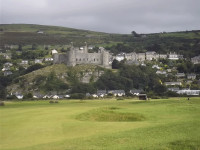
When Rhys Butler spent a summer on his hands and knees overseeding greens at Aberdyfi Golf Club, using an old nail board and seed, little did he realise where that process would lead him or, indeed, that it nurtured a love of overseeding and topdressing that remains with him today.
"My old boss, Richie Williams, got me a job as an assistant and I went from there," he explains. "Richie was a good first boss and was always very encouraging, but I've also met some fantastic people in the industry over the years, at Harrogate and other industry events."
Rhys completed his NVQ Level 2 and 3 Sportsturf at the Welsh College of Horticulture in Northop (now known as Northop College) and HNC Golf Course Management at Elmwood College in Fife, Scotland.
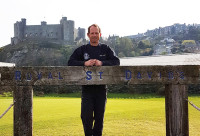
"I was also lucky to play a reasonably high standard of golf when I was younger, which enabled me to visit and play many of the best venues in the UK. I still regularly visit other courses and find it very important for my development ... and to 'pinch' ideas and view other practices. I'm also part of a number of online forums where regular discussions on turf topics help to keep me up to date with modern technologies."
Royal St David's is a traditional links course on the west coast of North Wales and, at 6,629 yards, is reputed to be the hardest par 69 in the world. This is an area where snow capped mountains greet you inland and the Irish sea throws all manner of 'weather' at you from the other direction. Rhys explains that the course is split into two by a public footpath that leads down to the beach, with ten holes on the south side.
The closing five holes are regarded as the equal of any.
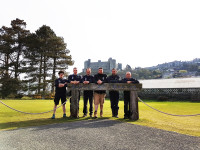
"Gwion has joined us on the apprentice scheme. He has developed very well and was taken on for his specific skills and passion for the job. I'd quite happily take on another two apprentices with his enthusiasm."
The location of Royal St David's seventy-nine hectare site requires careful management of the local ecology, with conservation high on Rhys's list of priorities.
"We've undertaken lots of ecological work. Natural Resources Wales (NRW) and the STRI put together a five-year Environmental Management plan for us. We are continually improving the environment with scrub management etc., trying to conserve the sandy links feel and improving all the playing surfaces."
"The aim," says Rhys, "is to conserve and enhance the diversity of habitat types that exist by achieving and maintaining an acceptable balance between the different habitat types."
The ecological plan aims to:

- Promote and conserve the 'links' landscape character via appropriate management of the fixed dune grasslands and associated habitat types
- Retain the size, health and connectivity of the different habitat types
- Manage the diverse conservation interests through a structured and phased programme of work, seeking advice in line with best practice guidance
Rhys continues; "More specifically, it will be essential that the open links character of the course is maintained, with minimal impact from natural succession, artificial inclusions or inappropriate management. The need for structural diversity (age structure) within retained stands of gorse and associated scrub will need to be managed to the benefit of birds and other wildlife. This will also provide important visual and golfing interest."
"It will be necessary to conserve the extent of wildflower (species rich) grasslands for their floral and bird interest. All of the above will be undertaken whilst recognising the need for bare ground and the expansion of the more localised and scarce habitat types, particularly the localised areas of heather and dune slack."
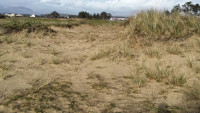
"We have developed an ongoing programme of recording the wildlife interests, giving particular emphasis to the priority species."
Last October saw the continuation of a massively successful 2013-2014 programme, whilst a 2014-2015 winter programme also achieved great strides in improving areas of key habitat.
"This was a huge task and was all carried out in-house by a passionate, determined and hard working team," says a delighted Rhys.
"One of the main priorities was to reduce the scrub and to return these areas to open sandy areas beneficial for both the golf course and the ecology of the site. It was a massive project and was carried out in line with NRW guidelines and the restrictions that came with the approved consent for the work."
"NRW have since returned to inspect our progress and are delighted with the high standard that the work has been carried out to, which has improved the ecology of the site."
"There are plans already in place for the continuation and further enhancement of the ecology of the site via further scrub clearance through to 2017."

"Management of gorse and scrub brings many indirect benefits," explains Rhys, "one of the main ones being a marked increase in bare sand. This is a vital habitat and one that is important for the ecological functioning of the links. As gorse and scrub is removed, clean sand is exposed and birds use such areas to dust down, sand lizards use them to bask and bees and wasps burrow into them."
"Bare sand also allows more sensitive plant species to colonise, providing colour and interest. It is important within the links environment, and it would be of benefit to include patches of bare ground where possible, particularly on southern and eastern facing slopes, for sand lizard interest. Mining wasps and solitary bees will also benefit from this habitat type. A low percentage (3-5% only) of bare ground over the entire site may be acceptable."

"We are continually trying to increase the fine grass content by overseeding, thereby changing the environment to favour these grasses. It has been a priority to increase grass cover over the whole of the golf course as many of the walkways and walk-off areas were very weak and lacking grass cover, leading to poor presentation."
"We also have rare dune heathland, which we are trying to encourage, and have carried out a good number of dune regeneration projects in the last few years."
"All this work was undertaken in-house, but we did buy a secondhand excavator to give us a helping hand," confirms Rhys.
The grasslands are largely red fescue (Festuca rubra) with occasional marram (Ammophila arenaria). Many areas, including the semi-rough, support numerous green-winged orchid (Orchis morio). Common twayblade (Listera ovata), northern marsh (Dactylorhiza purpurella) and southern marsh (D. praetermissa) orchids are also common through the late spring/early summer period. A number of particular rarities have been recorded at Royal St David's, including maiden pink (Dianthus deltoides) which can still be found between the 14th and 15th holes, and records also suggest its presence right of the 3rd hole. A much more visible plant is the sharp rush (Juncus acutus) which is at or near its northern limit here and is being used as a feature of the course, providing height interest within the rough and more formidable hazards extending out into the playing line.
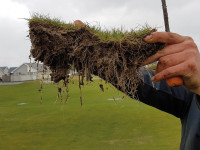
"The sand lizard (Lacerta agilis) is also an important reptile that can be found here. This species is given European protection under the Habitats (Conservation) Directive (EC42). The grasslands, particularly between the 7th and 10th, support many breeding pairs of skylark (Alauda arvensis) - a bird now recognised as declining and certainly one of European conservation concern."
"We have a very good relationship with Natural Resources Wales, so much so that we have featured on radio broadcasts with them, and there's even a TV programme coming up about the work they and we do on the links."
"And then there's the STRI's Bob Taylor; he is so passionate and knowledgeable and has been a true inspiration to many a greenkeeper."
With so much conservation work going on, it's perhaps something of a surprise to find any day to day maintenance going on at all! "It's all about presentation," states Rhys. "It is what separates us from the rest. The changing weather patterns now mean that we are cutting well into 'winter' and the course can still be very busy, so we have to work around that."
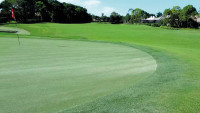
The soil profile is "nice and sandy" states Rhys. "The greens and tees were, in the main, just cut out of the native soil, but some have been tweaked over the last decade."
"Our greens maintenance schedule is typical for a links course. We aerate monthly with the Toro ProCore fitted with 8mm tines, put the Air2G2 across them twice a year, verti-drain and slit pre-Christmas."
"Height of cut is generally kept as high as possible in the winter, currently 7mm (March), dropping no lower than 4mm in the summer. We use Toro GR1000 hand mowers in winter and the Toro Triflex 3250 in the summer."
"We do lots of rolling with our Smithco to maintain surface smoothness and speed, without compromising on the height of cut and fescue health. And we overseed at least twice a year with the Vredo, with a double pass and lots of localised overseeding during the year."
"We don't scarify or verticut greens; brushing is about as aggressive as we get. I aim to get at least 200 tonnes of sand dressings on every year, using a Dakota 410 spin dresser."

"Parsley piert, daisy and cat's ear are something we are continually trying to clean out from the playing surfaces," continues Rhys, "and I was shocked at the disease pressure, especially fusarium, coming from a course which rarely had any, but I think we have made good progress in reducing this by improving cultural practices and, this year, we will be using a biofungicide and soluble compost tea to try and 'Beat the Fuzz'."
"Like most links courses, we suffer from leatherjacket attacks and, now that chlorpyrifos has gone, it will be a real headache in the future if no effective alternative is found; much the same as Merit Turf with imidacloprid to treat chafers. Their both being present can destroy golf courses following damage from badgers and birds."
"As well as the badgers, we also suffer from rabbit damage; we have lads who regularly shoot the rabbits, but badgers, being protected, we can't do anything about."
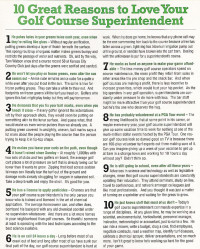
With so much going on around the course at all times of the year, Rhys says that it is important to communicate with the members. "I have a Royal St David's Links Team page on Facebook and a blog on the club's website. The members are also regularly kept up to date with emails from the secretary. It's about talking to the golfers; explaining why we do things and just keep educating them."
The Facebook page is populated on a weekly and sometimes daily basis with information and images that Rhys wants to get across to the members. The page currently has close to 300 'friends'; a good percentage of the membership. He also provides links to online articles that help to get his points across. Most recent has been an aeration article from the GCSAA, a compost tea article from Pitchcare and a '10 Great Reasons to Love Your Golf Course Superintendent' poster. How and why to repair pitchmarks is a recurring theme.
Rhys understands that the role of the head greenkeeper will inevitably change. "Further pressures will be put on us by the removal of chemicals and fungicides by the EU. There will definitely need to be even more emphasis on encouraging more disease resistant, sustainable golf courses."
"Trying to keep on top of paperwork takes up a good deal of my time; good planning is a must. Being a reasonably small team, all my time is spent on the course, so my paperwork does come home with me quite often, unfortunately, but it's all part of the job and position."
"The job has changed massively since I started," concludes Rhys. "There is a lot more science involved in the job now, whilst social media now makes communication with the golfing public so much easier. I always say 'educate them correctly before they just make anything up which sounds right'!"
Rhys is now three years into his role at Royal St David's and, in that time, he has certainly made a difference. Golfers - and Mother Nature - should be very pleased with his efforts thus far.

Toro Triflex 3420
Toro 3250 Greensmasters x 3
Toro GR1000 pedestrian greens mowers x 2
Toro 5510 fairway mower
John Deere 3245c rough mower
Toro ProCore 648
Tym tractor
Kubota tractor
Smithco roller
Gambetti 300 ltr sprayer
Amazone
Toro Workman x 3
Toro Workman mde
Kubota RTV
Charterhouse Verti-Drain
Charterhouse fairway overseeder
"Machinery is mostly purchased outright and new, if possible, but it does vary a bit. We have two excellent Toro GR1000 ex-tournament support hand mowers and an ex-demo Ryder Cup Smithco roller.
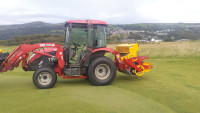
We have Major Owen ten minutes down the road who provide excellent back up service. They are a Toro and Kubota dealer.
Toro provide quality machinery and make up our main fleet; we have a Total Solutions Package with them. But we do demo a lot of stuff and, sometimes, other manufacturers, like the Smithco roller, are best for us, so we went with what was best for the course. The Smithco roller has really been beneficial to us.
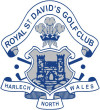
We hire an Air2G2 and Vredo disc overseeder from Shaun at Greener Grounds. He operates the Air 2G2 and I overseed; generally a day and a half and all greens and approaches are done. Those are certainly two machines I have on my wishlist.
Servicing is carried out mostly in-house with grinding outsourced.
We also have a wash down area that is compliant with current legislation."
